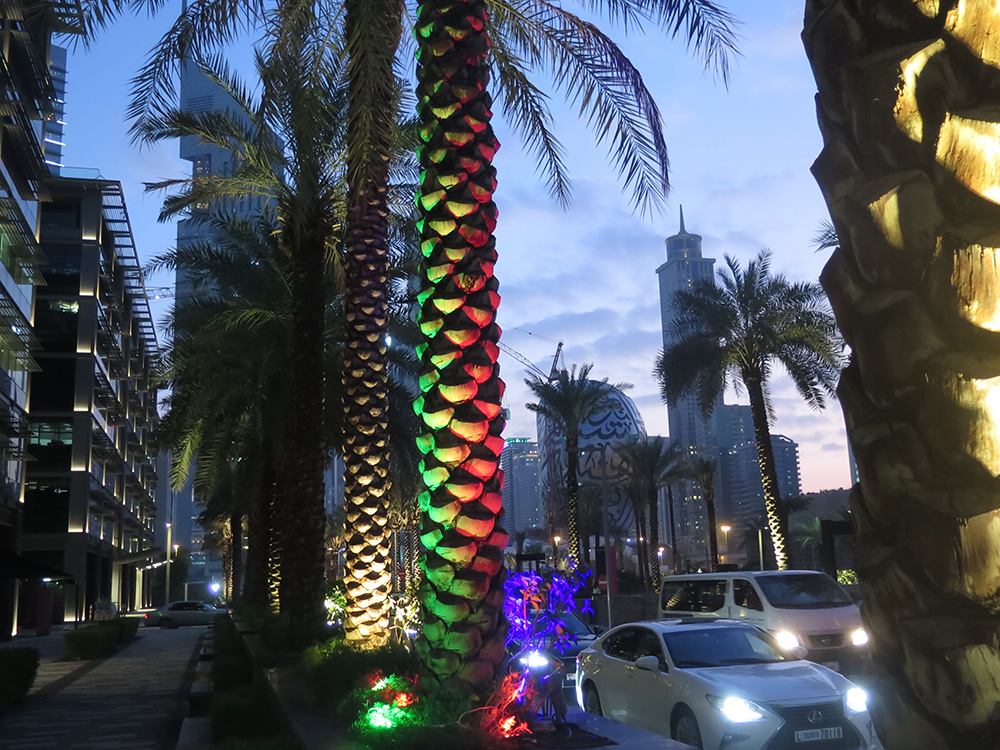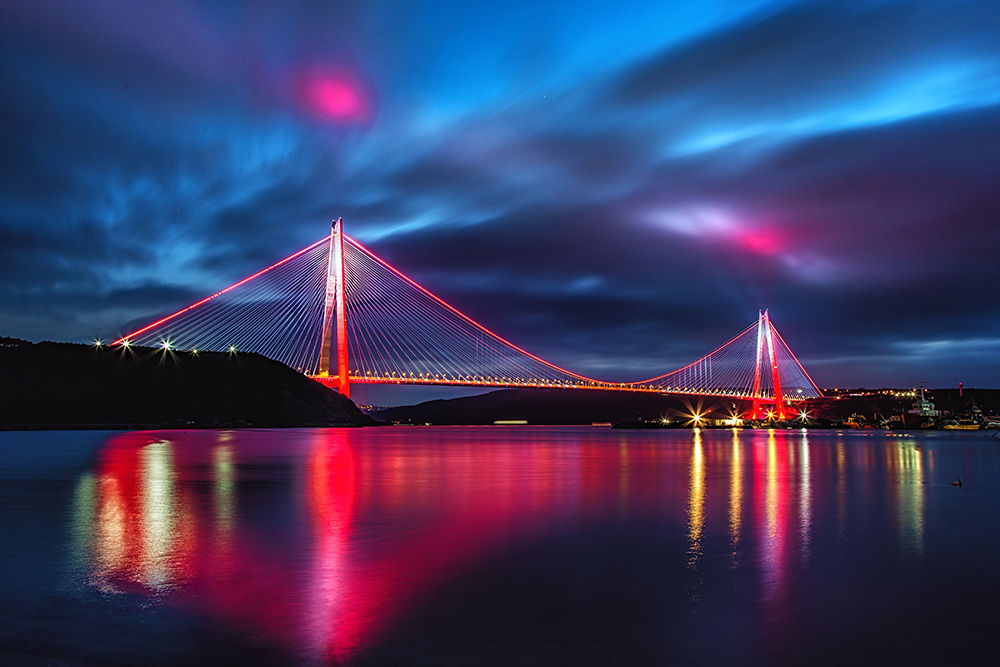
When it comes to the need for traffic management technology, the Middle East is booming.
The rise of the smart cities concept is one reason for this. “A lot of projects are coming on,” says Hesham Enan of Teledyne Flir. “The customer is looking for a trusted partner department who actually has been doing this for a long time - not just on the data sheet - and that's where we come into the game.”
As business development manager for the Middle East, Africa & South-east Europe, Enan has a huge area to cover. Teledyne Flir has been around in different forms for decades in these regions, and has built a reputation for delivery. There is a difference between what’s available in a brochure and what happens in real life. “I’ve seen a lot of people saying: ‘We can do 1-2-3-4-5’,” he says. “[But] when you actually do it – they don’t do it.”
Enan has been with the company seven years. “When I started, the market was not as big as now,” he says. “Right now, a lot of cities and authorities start to understand basically what they need, what they are looking for, and that was not the case seven years ago.”
Back then, he says United Arab Emirates, Saudi Arabia, Qatar and Oman had a clear idea of what was required to move forward. But now other countries see the possibilities too: “Morocco is very active, Egypt started to also to grow very much – there are two or three big projects - Turkey as well. The number of projects also is getting bigger.”
Urban and inter-urban
Teledyne provides two main solutions for authorities looking to improve traffic management. “The first is urban intersection control,” he explains. “We provide the sensors for the control of intersections. [Customers] are looking for a smart sensor that is reliable, that provides the needed information to the controller.”

The second is what Teledyne Flir calls ‘inter-urban’. “That covers roads, highways and tunnels and bridges, where we are providing automatic incident detection. So that system is crucial in [delivering] safety and smooth traffic.”
Perhaps the biggest development over the last few years has been the company’s work on detecting fire quickly. “We developed the technology through thermal imaging or thermal sensing to detect fire in tunnels - instead of waiting for the conventional system, like linear heat detectors to work after 10-15 minutes, we can detect the fire probably in less than a minute.” That emergency information goes to the operator, allowing them to save lives and infrastructure.
Unlike European cities, for example, air quality does not seem to be much of a driver in the region – but reducing vehicle idling, congestion and journey times is. And as Enan points out: “This will result in reducing CO2, which will enhance the air quality. They are looking at traffic efficiency, which has very good results in many different aspects.”
He is based in Dubai, UAE – a city known for busy highways such as Sheikh Mohammed bin Zayed Road and Expo Road. “I would say the traffic is getting better,” he smiles. Dubai Roads and Transport Authority (RTA)’s traffic management improvements prior to Expo2020 have had a positive effect on traffic flow. “That project basically covered most of the highways of Dubai with different technologies - one of them is our technology to detect incidents as early as possible. So the RTA can send traffic or any service needed to clear the road as soon as possible. All of this is presented on VMS signs around the city: where is the accident, what are the alternative routes and what is the expected travel time to reach that area. So it's very convenient for the driver right now. It's enhancing the traffic in Dubai.”
Saudi Arabia’s Vision 2030 project – to diversify away from oil revenue, to invest in infrastructure and become an economic hub, among other things – makes it potentially a big market for Teledyne Flir over the next few years. “It's not only about traffic, but about how they are doing business, construction, new urban architecture, it's a big combination coming into the market. That's the vision of Saudi Arabia and that's why traffic solutions are needed to make it as smart as it gets. So they are looking really at top-notch technology, and we have developed a lot of projects already there in the last 10 years.”
This includes almost 1,500 sensors in the capital, Riyadh, as well as in tunnels and highways in the east and west of the kingdom. “It's a very big market and we are very keen to be one of the key partners for Saudi to allow this transformation of the traffic business over time,” he says.
Qatar shop window
Last year’s soccer tournament, the Fifa World Cup 2022 in Qatar was a great shop window for the company. “That’s been a very interesting market for us in the last five years in preparation for the World Cup,” Enan confirms. “We did everything: intersection control, more than 1,000 cameras for incident detection around Qatar.” His favourite project involved pedestrian detection to help smooth the way for the crowds of fans who gathered for matches in the tiny Gulf state.
“We had 700 Flir TrafiOne sensors installed around the stadiums to ensure the safety of pedestrians across the intersections, so as soon as the camera detects a pedestrian, it changes the traffic lights into green for the pedestrian and blocks cars until the flow of the pedestrian across the street.”

TrafiOne also generates high-resolution data for measuring travel times to improve traffic flows, reduce vehicle idling times, monitor congestion and enhance safety for vulnerable road users.
Data is accessible for further processing by the Flir ITS-IQ, a cloud-based data analysis solution.
“It was an end-to-end solution, not only about just sensors,” he insists. “It was monitored by our software and integrated with the highest platform they have for ITS.”
Away from the Gulf States, Turkey is a key existing market for Teledyne Flir where the company is now focusing primarily on high-end traffic management products. Its incident detection cameras already cover the length of the six-lane 4.6km 1915 Çanakkale Bridge in the west of the country, and the company was commissioned by IC İçtaş-Astaldi Consortium (ICA) to put 60 ITS Series dual cameras on the Yavuz Sultan Selim Bridge in Istanbul. “We provided thermal and the visual cameras for incident detection,” he explains.
While Teledyne has an increasing interest in Morocco and Egypt, South Africa is perhaps where the company has been most active. “It is one of our biggest markets in that region and one of the most developed countries in terms of traffic businesses throughout the continent,” Enan says. “They know the ITS market very well, they understand it. So the traffic in South Africa is a very, I would say, mature business. In North Africa they have started to get this aspect.”
Intersections in Morocco
Smart city initiatives in Rabat and Casablanca have driven this in Morocco, he thinks, with implementations in the last three or four years: “Right now there are two or three big projects that are rolling out, where we have sold more than 600 sensors in the last year and a half.”
Egypt is grappling with its own smart city and mobility projects, including the construction of a New Administrative Capital close to Greater Cairo (the largest urban area in Africa, with 20 million people). “That's one of the projects that will be a milestone, and traffic and smart applications are one of the key elements towards the success of that,” he continues. “We are part of that through our urban and inter-urban solutions.”
Enan believes that early engagement with customers and consultants to explain its products is one way Teledyne Flir gains an edge in these highly competitive, emerging environments.
“That's definitely one of the main criteria to ensure the success of our solution, being there early. Everyone has this on the datasheet, right? So explaining the difference to the customer on how to choose the best solution for them, it's the most important,” he says. Competitiveness is not only about the same product competing, it’s also about different technologies – such as Lidar or radar, and it’s also, of course, sometimes purely about price.

“Some people like old technologies like ground sensors, for example. You need to explain to the customer that cameras right now are working as effectively – in some developing countries, you still need to talk about that. So that's very important. Some of the customers are looking for the prices only - and that's not very easy. We position the right product for the customer needs.”
He sees artificial intelligence taking the industry into new directions – but points out that we are not quite there yet. “When people hear ‘AI’, they want everything: incident detection, licence plate recognition, you can do seat belt, or face recognition,” Enan smiles.
“They don't give any limitations in the expectations, which is very interesting - but on the ground it's not that easy. Putting a camera in to do all these types of applications, let's say in terms of physical location, it's not possible that you do all of that. So AI is misinterpreted by the customers, by the end user, that it can do everything.”
AI and prediction
However, AI’s ability to enhance the performance of existing detection technology is considerable, Enan says. “So if we're talking about video detection, it enhances the detection rate and the detection capabilities in a very nice way. If you're doing licence plate, then it detects it in a better way. The second point is the data: the level of data that is coming from the camera right now is much bigger. The camera can give us more information. For example, in our solution we can detect right now the direction of the car and then the counting movement, going from one way to another, the travel time - all of that we can detect through AI and through other technologies with our algorithm. So that's one of the things that AI is bringing to the table.”
Prediction will be the big thing that AI brings in the near future. “Information will be sent to the controller, who will not wait for the traffic event but will take the decision before - because of some signs that will be happening on that road,” Enan says. “The cameras will detect this early enough and predict it and give this information to the controller which will take an action early enough."
He concludes: “So right now, the level of data is getting bigger. In the near future it is the prediction that will be changing the game.”





